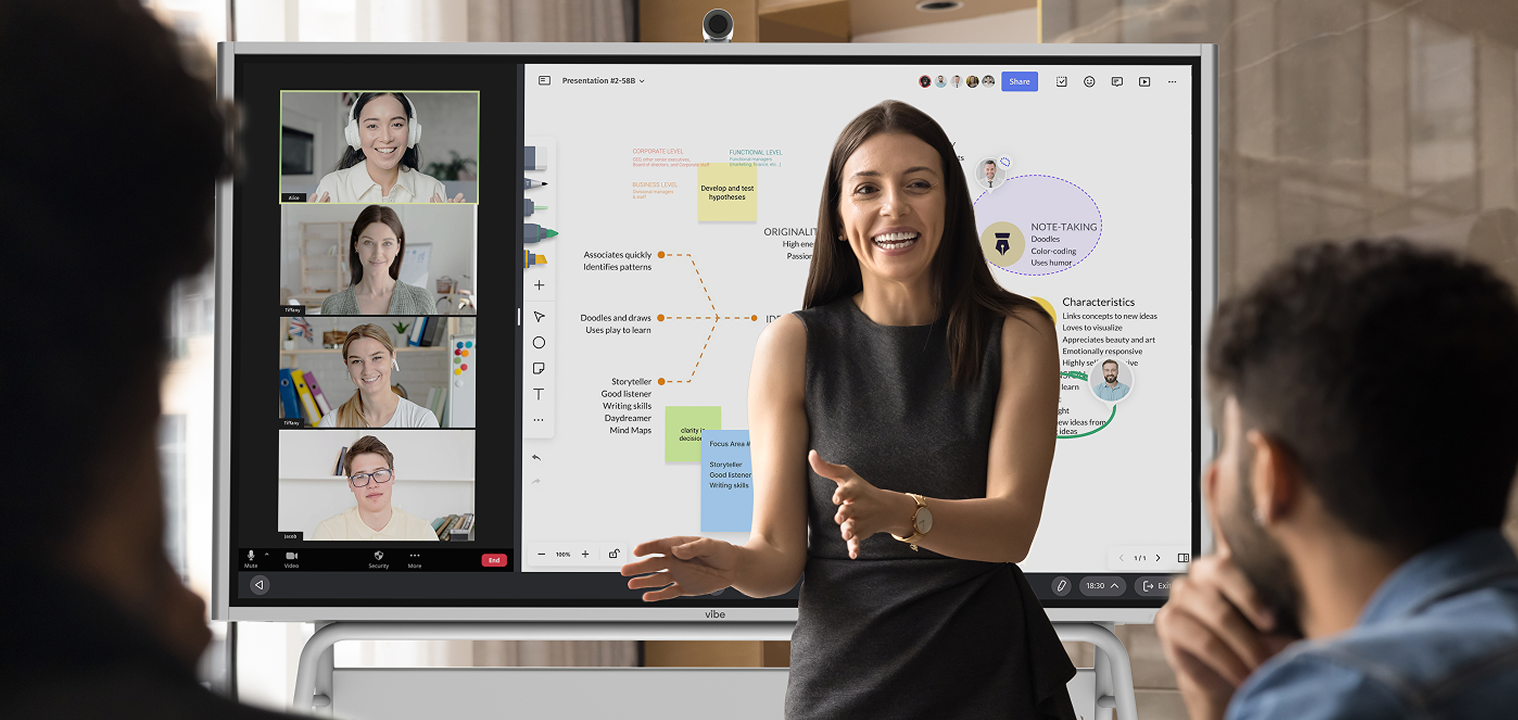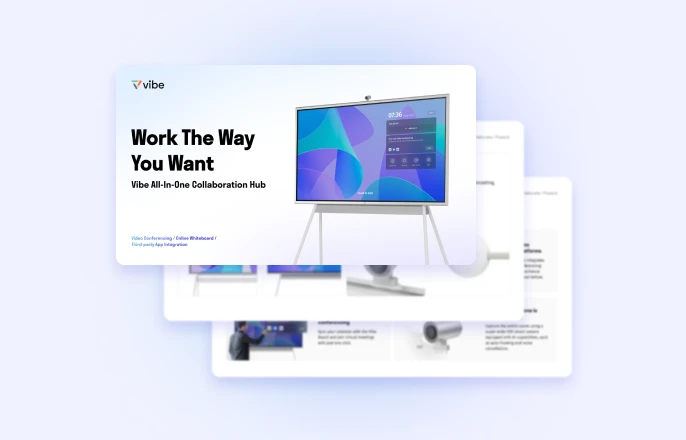You’ve given a winning pitch, answered every question, and finally hear it: "I’ll think about it."
It’s the sentence every salesperson dreads — and the reason 35% of reps say closing the sale is the toughest part of their job. Closing is part skill, part strategy, and your ability to do both can greatly affect whether someone’s interest becomes revenue. As you figure out when to push, when to pause, and how to communicate value clearly but naturally, that’s when the tide turns.
Below, you’ll find 10 practical sales closing techniques built on psychology, timing, and trust — so you can guide every conversation confidently to "yes."
- Matching sales closing techniques to buyer type and timing leads to higher conversions.
- Objections aren’t roadblocks, but chances to clarify and reassure.
- Strong client communication and visual storytelling turn hesitation into action.
The Mindset & Principles Behind Effective Closing
Closing works best when you think of it as alignment, not persuasion. When you understand what the buyer truly values and believe in your solution, the close feels natural and your offering feels obvious. It’s the point where both sides recognize the same goal.
Keep these principles in mind:
-
Understand real needs: Start by uncovering what drives the buyer’s decision — their goals, frustrations, or pressure points. The better you understand the "why" behind their purchase, the easier it is to show in your client presentation how your product creates meaningful change for them.
-
Ask for the sale: Waiting for a buyer to decide on their own often slows momentum. A confident ask signals readiness and helps them see that moving forward is the logical next step.
-
Listen actively: People often reveal more in tone and pacing than in their actual words. Pay attention to what feels uncertain or unspoken, then reflect it back to show you’re tuned in to their perspective.
-
Reframe objections: A hesitation usually means the buyer needs reassurance, not persuasion. Acknowledge the concern, connect it back to the value you offer, and help them picture success once that worry is resolved.

When & How to Choose a Closing Technique
It’s not realistic to just follow a script — you really need a read on the moment. Some buyers move quickly once they see value; others need reassurance or extra proof. The right approach depends on where their head is, which means that recognizing cues in tone, pacing, and questions is key. Your technique can follow accordingly as you watch for these buyer signs:
-
"I’ll need to think about it": Signals hesitation or an unresolved concern that needs clarity. It’s important to bring your buyer back to the core value of your sales pitch here. Slow down and uncover what’s unclear.
-
Questions about pricing or ROI: Indicates genuine interest, but the buyer still needs proof of value. This is where examples and visuals help them picture results that outweigh the cost.
-
Requesting another call: Suggests they’re delaying or need buy-in from someone else. You can give them space while still setting a firm next step, such as scheduling your next call, so that you don’t lose any momentum.
-
"We’ll get back to you": Often a polite deflection that means confidence hasn’t been earned yet. Your next step needs to reignite some interest and trustworthiness by confirming your priorities and promises. This is also when a little urgency goes a long way.
10 Proven Sales Closing Techniques
Let’s get down to brass tacks: how do you seal the deal? These 10 sales closing techniques have been tested for years and proven effective. Consider the kind of buyer you are working with and the holdups they may have to determine which ones are going to give you the best chance of convincing them.
1. The Assumptive Close
This approach treats the deal as a natural next step instead of a question mark. Your surety helps eliminate doubts that could be creeping in. By moving the conversation toward logistics or next actions, you signal confidence and make it easy for the buyer to picture the commitment as already in motion.
Best used for: Buyers who’ve shown strong interest and had their concerns addressed.
Example: "Would you like us to deliver on Tuesday or Thursday?"
2. The Summary Close
When attention starts to drift near the end of a conversation, this technique brings focus back to the value. Summarize the top benefits and how they tie directly to the buyer’s goals before asking for confirmation. It’s less about repetition and more about connecting dots they’ve already seen.
Best used for: Buyers who’ve agreed on the fit but need a clear final push.
Example: "This solution saves five hours a week on reporting and gives your team clearer visibility — should we move forward?"
3. The Puppy Dog Close
Sometimes people need to feel the product before they can justify it. Offering a no-risk trial or short-term pilot lets them experience the benefits firsthand and build attachment through use. It replaces verbal persuasion with lived proof.
Best used for: Buyers who seem cautious or overwhelmed by choice.
Example: "Why don’t you try it out for two weeks and see how it fits your workflow?"
4. The Urgency or Scarcity Close
When time or availability matters, a well-timed incentive can help buyers be more decisive. The key is authenticity — communicate deadlines or limited quantities only when they’re real, and frame them around the buyer’s benefit.
Best used for: Buyers who are engaged but stalling on a decision.
Example: "We’re offering 20% off through Friday. Would you like me to reserve your spot today?"
5. The Option Close (Alternative Choice Close)
Instead of asking for a yes or no, offer two appealing options that both lead forward. This structure makes the decision feel smaller and easier, while still keeping control in the buyer’s hands.
Best used for: Buyers who overanalyze or hesitate between possibilities.
Example: "Would you prefer the monthly plan or the discounted annual subscription?"

6. The Takeaway Close
This technique uses subtle scarcity to reframe value. By removing part of the offer — such as an add-on, upgrade, or extra service — you highlight what’s at stake if the buyer waits. It can reset perspective and spark renewed commitment.
Best used for: Buyers who seem interested but stuck on price.
Example: "If onboarding support isn’t essential, we can remove it and lower the total."
7. The Question Close
Sometimes, you’ve done the persuading you can on your own and need to bring them more fully into the conversation. Questions invite buyers to engage in their own reasoning, which often leads them toward a confident yes. Instead of restating benefits, ask something that helps them connect the solution to their priorities.
Best used for: Consultative or problem-solving sales conversations where collaboration matters.
Example: "How would this impact your quarterly goals once it’s implemented?"
8. The Ben Franklin (Pros & Cons) Close
This classic technique brings structure to indecision. Listing advantages and drawbacks together makes the process transparent and logical, and seeing more positives than negatives builds confidence naturally.
Best used for: Analytical buyers who rely on logic and data to decide.
Example: "Let’s outline the pros and cons together. What do you see as the strongest benefits?"
9. The Readiness Close
It’s one thing for a buyer to have genuine concerns they need to reason out or budgets they need to evaluate. It’s another thing when they haven’t quite explained their hesitation. Sometimes a buyer’s hesitation comes from uncertainty they haven’t voiced yet. Asking for a simple readiness rating helps surface what’s missing, giving you a clear direction for next steps.
Best used for: Buyers who express interest but haven’t committed.
Example: "On a scale from 1 to 10, how ready do you feel to move forward?"
10. The Soft Close
Longer sales cycles require building trust, not just racing to a sale. A soft close tests a buyer’s interest without pressure. It’s about gauging readiness while keeping the interaction conversational and comfortable. By asking a low-stakes question about fit or comparison, you learn how the buyer perceives value while keeping the door open for follow-up.
Best used for: Early-stage conversations or first demos where trust is still forming.
Example: "How does this solution compare to what you’re currently using?"
Matching Techniques to Buyer Types & Situations
Every buyer approaches decisions differently. Some analyze every angle, others move on instinct, and a few rely on trust more than data storytelling. Understanding those tendencies helps you choose a closing technique that fits their mindset and keeps the conversation collaborative instead of transactional.
By buyer type
-
Analytical: Logical thinkers respond to structure and clarity. Techniques like the Summary Close, Ben Franklin, or Readiness close give them data and reflection points that make commitment feel reasoned.
-
Relationship-focused: These buyers prioritize trust and rapport. Use the Soft, Question, or Puppy Dog close to keep things conversational and reinforce confidence in your partnership.
-
Risk-averse: Fear of loss can outweigh the desire for gain. Approaches like the Puppy Dog, Question, or Summary close help reduce uncertainty by letting them test or verbalize the value.
-
Price-sensitive: These buyers want proof they’re getting the best deal. The Option, Takeaway, or Urgency close reframes cost as opportunity, making value easier to grasp.
-
Decisive: They appreciate efficiency. The Assumptive, Urgency, or Option close works well when you focus on action and next steps.
By situation
-
End of demo: Revisit key benefits and ask for the sale confidently — a Summary or Assumptive close keeps momentum strong.
-
Lingering hesitation: Explore what’s holding them back with a Readiness or Ben Franklin close to turn uncertainty into direction.
-
Budget concerns: Address limits transparently. A Takeaway or ROI-based discussion can reshape how they view investment versus cost.
Overcoming Objection & Timing Challenges During Closing
Objections are a normal part of any sale — in fact, they show sincere engagement and give you an opportunity to go deeper. The key is to respond with curiosity rather than stress. Here’s how you can respond when concerns are brought up during your sales closing strategy:
-
Ask clarifying questions: Phrases like "What’s holding you back?" or "Can you tell me more about that concern?" reveal what’s behind the hesitation. An actual conversation can do wonders rather than pitching the whole time.
-
Use the feel–felt–found approach: Acknowledge their perspective, share how others have felt the same, and describe what they discovered after choosing your solution. Relatability is a powerful tool.
-
Link objections back to benefits: If a buyer hesitates about cost, connect it to efficiency gains, saved hours, or simplified workflows. This goes far for pragmatic buyers, especially when they have a problem that needs solving, and money will have to be spent one way or another.
-
Use urgency with care: Timing tools only work when trust is already built. Otherwise, employing scarcity can feel manipulative and make you look desperate instead of confident and genuine.
-
Embrace silence: Pausing after a key question gives buyers space to process and often prompts honest feedback. There’s no need to rush people into a decision, especially when your responses could be the turning point for your buyer.
-
Test readiness: Revisit their commitment with prompts like, "Would this still make sense if we resolved that issue?" This helps you gauge more accurately what is holding them back.
Ultimately, you can deepen the trust buyers have in you based on how you respond to their callouts. By handling concerns calmly and guiding the conversation back to value, protests can turn into progress.

Common Mistakes to Avoid in Closing
Not everything is in your control, but you can avoid these pitfalls to give yourself the very best chances.
Pushing Too Early or Before Objections Are Resolved
Jumping to the close too soon often creates a sense of tension that’s hard to recover from. Buyers need to feel their questions have been fully explored before they commit. Instead of accelerating the conversation, slow down and ask what else they’d like to understand. The goal is to make your timing feel collaborative. To make sure they are comfortable with your pace, you can ask, "Is there anything else you’d like to clarify before we move forward?"
Not Asking Directly for the Sale
Many conversations end with polite agreement but no clear next step. Avoid leaving things open-ended by confidently asking for commitment once value and fit are clear. There’s nothing wrong with asking, "Are you ready to take the next step?" A direct ask shows certainty in your solution and helps the buyer feel grounded in their decision. Without it, even interested prospects can drift into indecision.
Overused or Thinly Supported Urgency
False deadlines or exaggerated scarcity in your sales deck often cause quiet skepticism. If the timing really matters, explain why — maybe an upcoming rollout or seasonal pricing shift. Authentic context turns urgency into clarity rather than stress. Buyers act faster when they understand the reason behind the timeline.
Focusing on Features Instead of Outcomes
Like any persuasive venture, people ultimately want to understand not the what, but the why. Listing specs or functions might sound informative, but it rarely connects emotionally. Buyers want to visualize what success looks like after they say yes, such as smoother workflows or easier collaboration. Translate each feature into a real-world advantage that matters to them. That shift in focus builds momentum naturally.
Unclear Next Step After Asking for the Sale
A verbal yes means little without direction. Once a buyer commits, immediately outline what comes next: documents to sign, setup timelines, or onboarding details. This keeps enthusiasm high and prevents post-decision uncertainty. Clear next steps make the transition from selling to delivery feel smooth and professional.
The Power of Training Your Closing Skills
If you’re a salesperson, you likely have great instincts — but those are only going to get you so far. Everyone benefits from developing better closing skills through repetition, reflection, and honest feedback.
Improvement starts with data. Track your close rate, average deal cycle, and most common objections to see where progress slows. Recording and reviewing calls can reveal small cues you miss in the moment — tone shifts, hesitation points, or missed buying signals. Use peer reviews and team coaching to get fresh perspectives on phrasing and delivery.
Regular role-playing keeps your skills sharp for different buyer personalities. Switch roles occasionally to see how your approach feels from the customer’s seat. Finally, analyze CRM data to uncover which closing styles perform best by buyer type or deal size. Patterns like these help you personalize your approach and make every future conversation smoother.
Boosting Closing Success With the Right Tools
The best closers make value tangible. They show real outcomes with an easy-to-understand business presentation. The Vibe Board S1 turns sales conversations into interactive sessions where teams sketch ideas, refine proposals, and invite buyers into the process. It shifts selling from presentation to collaboration, which builds real conviction in the decision.
Trusted by over 40,000 business leaders, this smart board helps teams connect and present with impact — whether in a room or across the world in a virtual meeting. When prospects can watch their solution take shape in real time, commitment follows naturally.
Request a demo and see how Vibe helps close more deals, faster.
 Team using the Vibe Board S1 to conduct a summary close in a hybrid meeting.
Team using the Vibe Board S1 to conduct a summary close in a hybrid meeting.Sales Closing Techniques FAQs
What is the best method of closing the sale?
It depends on the buyer and where they are in the decision process. Approaches like the Assumptive, Summary, or Question close work well when trust is established and value is clear.
What is the 10-3-1 rule in sales?
For every ten leads, aim for three meetings and one close. It’s a simple way to set activity goals and forecast results.
What are the three types of closes of a sale?
Most closes fall into three styles: direct, assumptive, and summary. Each can work when matched to the buyer’s confidence and urgency.
What are the seven steps of closing a sale?
Identify needs, present solutions, handle objections, confirm interest, ask for the sale, agree on next steps, and follow up promptly.









-1sbltxxq4FYxHrXrwJVLsCDNsXpqNa.webp)
-5Zp0pmSytvcuYDVs1LvuwplKuRneK0.webp)
